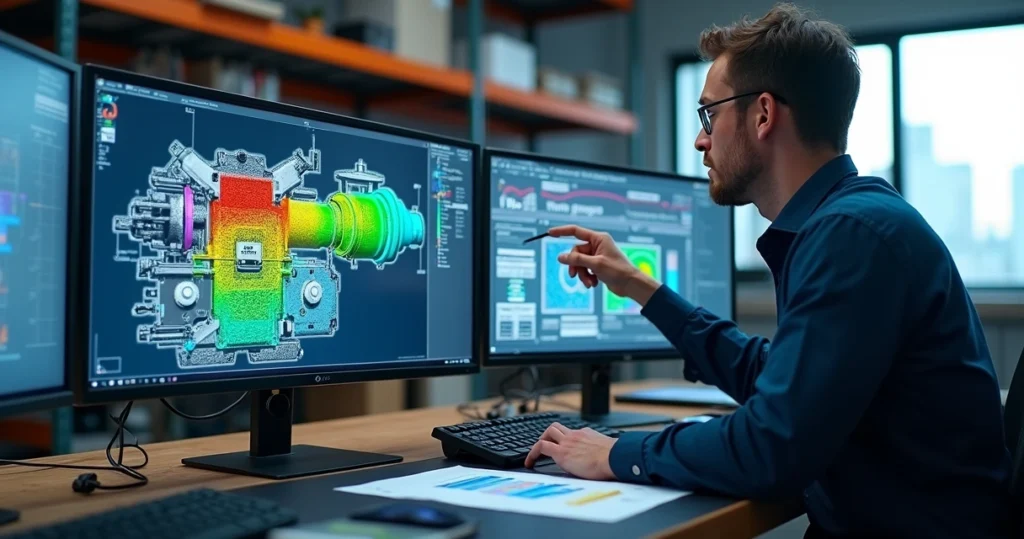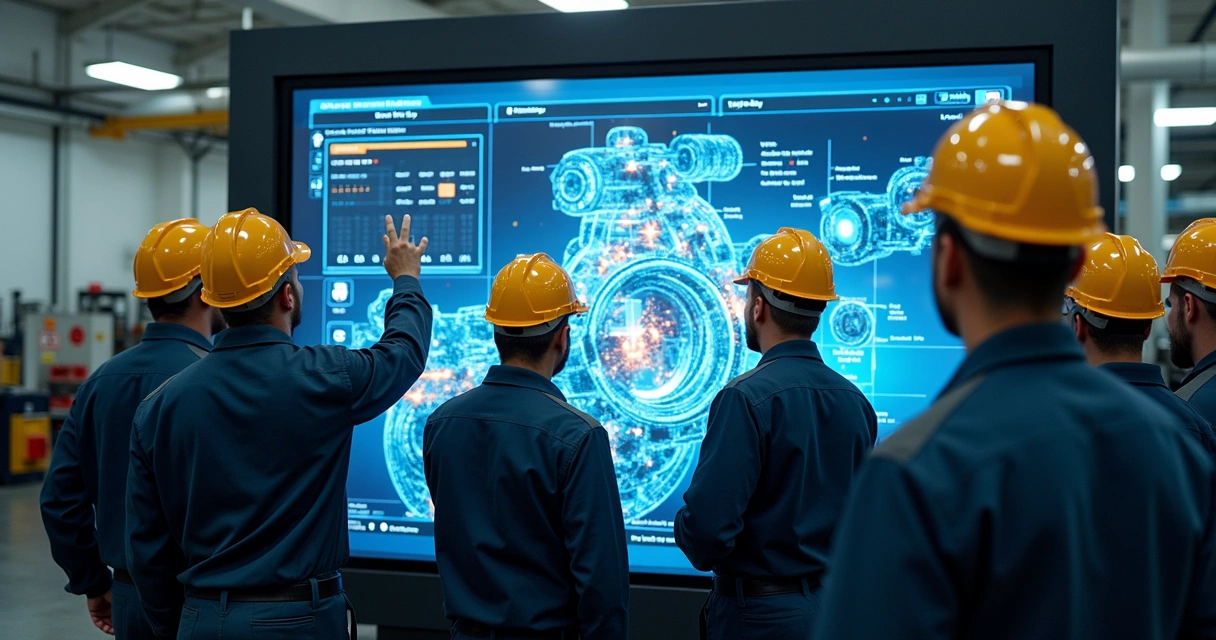7 Unexpected Ways Digital Twins Support Maintenance Teams

If someone told you ten years ago that machines would come with their own virtual double, you probably would have shrugged. Today, it’s hard to ignore how digital twins are changing the way maintenance teams keep equipment running. These are not just flashy 3D models. Digital twins act as living, breathing counterparts to physical assets, helping us catch problems before they become disasters, giving us insights no manual inspection could ever offer.
Still, many maintenance teams see digital twins as just for predictive maintenance, or as too futuristic for their daily work. The truth is, the benefits go a lot deeper. And a bit sideways, too. So if you’ve ever wondered if there’s more to digital twins than fancy dashboards, let’s look at seven practical, sometimes surprising, benefits—many of which you may not be using yet.
1. uncovering hidden root causes
Imagine a machine always breaking down in unpredictable ways. Standard tools would have you pore over logs and manuals, hoping for a clue. Digital twins, like those supported by Prelix, allow engineers to play out different possible causes in a risk-free environment. Real-time sensor data is matched with every twist and jitter of the virtual counterpart. Unseen patterns pop up. One gear always vibrates more at night? The twin tells you, no guesswork. And when you need to run a root cause analysis using AI, these virtual models are the perfect evidence collectors—helping you avoid repeating the same mistakes.
Diagnose before you even open the panel.
2. smarter training for new technicians
Not every maintenance job is hands-on from day one. Digital twins let junior team members walk through troubleshooting routines, simulate breakdowns, and “fix” issues in a virtual setting. There’s no risk of halting a production line or making a rookie mistake that costs thousands. Experienced staff can even create failure scenarios within the digital twin, adding layers of realism. It’s not quite game-like, but it’s a safe place to fail and learn, preparing new team members in a way that textbooks and static diagrams never could.
3. improving collaboration across shifts
Good handovers are rare, especially on the shop floor when teams run 24/7. With a digital twin, the state of every asset is visible and up-to-date for anyone logging in. If the afternoon shift found a temperature anomaly but didn’t have time to fix it, the night crew can see exactly what happened—no more searching through scattered paper logs or hoping someone remembers to pass on key info.
- Visual logs are linked to each machine.
- Maintenance notes stay with the virtual asset.
- Miscommunications become yesterday’s problem.
4. rapid compliance and audit reporting
No one enjoys compliance paperwork, but regulations are getting stricter, especially in manufacturing. Digital twins keep detailed histories of every maintenance intervention, parameter change, and abnormal reading. When an auditor calls, the digital record is ready to show—with accurate timestamps and context. With Prelix, those compliance reports that used to take days can be generated in minutes, thanks to integration with existing maintenance management systems. This alone has saved time and headaches for teams that always struggled under audit pressure.

5. simulating upgrades before spending a cent
Maintenance teams are often tasked with suggesting or approving upgrades. Will a new pump save energy? Will adding a soft starter cut wear and tear? Most decisions involve a bit of guesswork. Digital twins allow you to model the impact virtually, running “what if” tests without ever touching a tool. So, before budget is spent or production is disrupted, you get data on what will actually work.
This approach has become more popular, especially as current research shows digital twins will soon be in nearly 89% of IoT platforms. The ability to experiment risk-free makes teams more comfortable recommending—and justifying—improvements.
6. enabling predictive scheduling that fits reality
Digital twins don’t just warn of looming failures. They also collect long-term performance data, letting your team find the perfect moment for planned maintenance. Maybe a pressure valve runs hotter after every weekend shutdown, or one batch process wears pumps faster than others. With this level of granular, experience-backed prediction, you build maintenance schedules that fit your reality, rather than default guidelines. According to research highlighted on smartspatial.com, predictive methods using digital twins can cut breakdowns by up to 40% and trim unnecessary costs.
Replace guesswork with real scheduling insight.
7. identifying trends and risks before they go viral
Sometimes the most costly risks hide in plain sight. A digital twin, fed on years of data, uncovers slow-building issues—a vibration pattern that’s barely changed for months, a drift in calibration that only shows up over thousands of cycles. Teams often miss these until it’s too late. This is where the unexpected insights surface. Instead of reacting, you act early.
For some teams, it’s helped them catch not only technical faults but even changes in operator behavior, leading to a safer, less stressful workplace. This connection between people, machines, and processes—something Prelix emphasizes in its platform—shows how digital twins become more than just tech. They’re partners in awareness.

Are digital twins becoming standard?
A Markets and Markets report predicts a huge growth in the use of digital twins, from $10.1 billion in 2023 to $110.1 billion by 2028. This is not a passing trend. A 2022 IBM study points out that the digital twin market could reach $73.5 billion by 2027. This lines up with what many teams are reporting: less downtime, faster root cause analysis, and more certainty in every decision (GE Digital research shows up to 45% less unplanned downtime).
It’s also shaped the way companies certify processes and improve their people. There are in-depth guides, like the Prelix blog on digital tools in industrial maintenance, which address not only the technology but the teamwork and culture changes this transformation brings.
Breaking old habits with digital twins
You may wonder: will digital twins completely replace traditional maintenance? Probably not. There’s always a need for hands-on knowledge—the kind built over years on the shop floor. But these tools offer something new. They’re not about replacing people. They’re about giving people better ways to see and think.
If you’re ready to take the next step, consider exploring practical guides to RCA or dive into topics for Portuguese readers at Prelix em português. Perhaps your team is already using some digital twin features and you just haven’t called it that yet. Or maybe this article nudged you a bit closer to trying.
Digital twins don’t just monitor. They empower.
Curious about what Prelix can bring to your industrial maintenance? Get in touch with us today, start your journey, and see how digital twins can shift the way your team works—turning every breakdown into a learning moment, and every report into insight.
Frequently asked questions
What is a digital twin?
A digital twin is a real-time virtual representation of a physical object, process, or system. It uses data from sensors and historical records to simulate everything happening in the real-world counterpart, making it easier for team members to track, experiment, and predict without touching the physical asset.
How can digital twins help maintenance?
Digital twins help maintenance by providing instant insight into how equipment is behaving and what might go wrong. They let teams test scenarios, predict failures, record every change, and even simulate improvements—reducing surprise breakdowns and making repair schedules smarter. Teams using digital twins have seen less downtime and more consistent results, as highlighted by several recent studies.
Are digital twins expensive to implement?
Costs can vary based on the complexity of the system and what you want the digital twin to do. Some organizations start small, modeling only a single machine, while others build out twins for an entire plant. With solutions that integrate with your existing systems, like Prelix, many teams find the return comes quickly—especially as compliance and audit requirements get tougher every year.
Is it worth it to use digital twins?
Many recent reports, such as those noted in studies of predictive maintenance, indicate that digital twins can reduce breakdowns by up to 40%, lower costs, and give maintenance teams more confidence. If your operations depend on keeping machines in top shape, digital twins usually pay for themselves in less downtime, faster reports, and fewer emergencies.
What are the best digital twin platforms?
The best platform depends on your needs, the type of equipment, and your integration requirements. Solutions like Prelix are designed for industrial maintenance and root cause analysis, making them easy to connect with what you already have. Focus on platforms that provide clear visualizations, easy data integration, and support for detailed troubleshooting and reporting. For more insights, check out detailed guides like the Practical RCA Guide in Portuguese.
